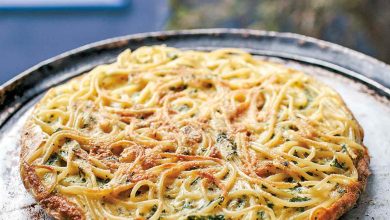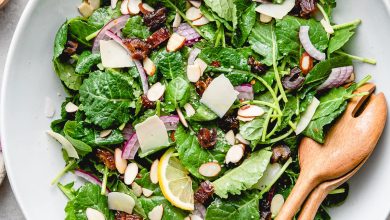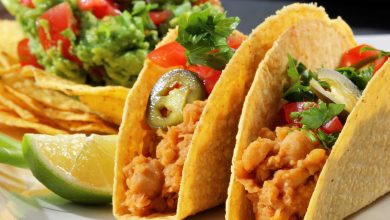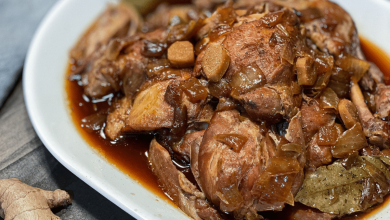🥓🍳 Bacon and Egg Lasagna 🍝
Bacon and Egg Lasagna is a delicious twist on traditional lasagna, combining the savory goodness of bacon and the richness of eggs to create a unique and comforting dish. Let’s explore its history, components, preparation steps, and the time needed to make it!
History:
The history of Bacon and Egg Lasagna is not well-documented, but it likely emerged as a fusion of Italian and American cuisines. Traditional Italian lasagna typically features layers of pasta, meat sauce, cheese, and bechamel, while this variation adds a delightful breakfast twist.
Components:
- Lasagna Noodles: The base of the dish, typically cooked al dente.
- Bacon: Crispy strips of bacon add a smoky, salty flavor.
- Eggs: Scrambled or fried eggs provide richness and protein.
- Cheese: A combination of mozzarella, Parmesan, and ricotta cheese is often used.
- Sauce: You can use a bechamel sauce or a white sauce seasoned with herbs.
- Seasonings: Salt, pepper, and optional herbs like parsley and chives.
Preparation Steps:
-
Preheat the Oven: Preheat your oven to 375°F (190°C).
-
Boil the Noodles: Cook the lasagna noodles according to the package instructions, and drain them.
-
Cook the Bacon: In a skillet, cook the bacon until it’s crispy. Drain it on paper towels, then crumble or chop it into small pieces.
-
Prepare the Eggs: Scramble the eggs or fry them to your liking.
-
Make the Cheese Mixture: In a bowl, combine mozzarella, Parmesan, and ricotta cheese. Season with salt and pepper. Add chopped herbs if desired.
-
Assemble the Lasagna:
- Spread a thin layer of the white sauce on the bottom of a baking dish.
- Layer cooked lasagna noodles.
- Add a layer of the cheese mixture, eggs, and bacon.
- Repeat the layers until all ingredients are used, finishing with a layer of cheese on top.
-
Bake: Cover the lasagna with aluminum foil and bake in the preheated oven for about 30-35 minutes. Then, remove the foil and bake for an additional 10-15 minutes, until it’s golden and bubbly.
-
Rest: Let it rest for a few minutes after removing it from the oven before serving.
Time Needed:
Preparation and cooking time for Bacon and Egg Lasagna may take around 1.5 to 2 hours. This includes cooking the bacon and eggs, assembling the lasagna, and baking it to perfection.
Enjoy your delicious and hearty Bacon and Egg Lasagna, a delightful fusion of breakfast and Italian cuisine! 🥓🍳🍝😋
Certainly, here are some general nutrition facts and health considerations for Bacon and Egg Lasagna:
Nutrition Facts (Approximate, per serving):
- Calories: A typical serving of Bacon and Egg Lasagna contains approximately 400-500 calories.
- Protein: It provides a good amount of protein, primarily from eggs and cheese, with around 15-20 grams per serving.
- Carbohydrates: The lasagna noodles contribute carbohydrates, resulting in about 25-30 grams per serving.
- Fats: Bacon and cheese contribute to the fat content, with roughly 20-25 grams per serving.
- Fiber: Lasagna may not be particularly high in fiber, with around 2-3 grams per serving.
- Sodium: Bacon and cheese are sources of sodium, so a serving may contain 700-900 milligrams or more.
Health Information:
-
Moderation is Key: Bacon and Egg Lasagna, like many pasta dishes, can be calorie-dense due to the cheese and bacon. Enjoy it in moderation to maintain a balanced diet.
-
Protein: The dish provides a decent amount of protein from eggs and cheese, which is essential for muscle growth and repair.
-
Saturated Fat: Bacon and cheese are sources of saturated fat, which should be consumed in moderation as excessive intake may contribute to heart issues.
-
Sodium: Be cautious about sodium content, especially if you have high blood pressure. You can reduce it by choosing low-sodium bacon and cheese.
-
Carbohydrates: The pasta contributes to carbohydrate intake. If you’re watching your carb intake, consider using whole-grain lasagna noodles.
-
Nutrient Balance: To make it a bit healthier, you can add vegetables like spinach or mushrooms to increase fiber and micronutrient content.
-
Portion Size: Controlling portion size is essential to manage the calorie and nutrient intake of this dish.
-
Dietary Restrictions: Adjust the recipe to fit dietary restrictions, such as using gluten-free noodles or dairy-free cheese if needed.
Remember that these nutrition facts are approximate and can vary depending on the specific ingredients and portion sizes used in your recipe. If you have specific dietary concerns or health goals, it’s advisable to consult a nutritionist or healthcare professional for personalized guidance.








